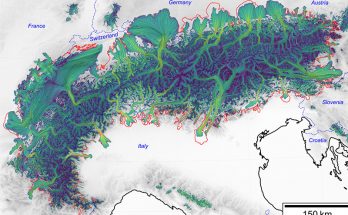Cette publication est également disponible en :
![]() Français
Français

Heat waves are a major threat to human health and ecosystems and will further intensify in the future in virtually all inhabited regions. For now, predictive models do use the full potential for heatwave prediction.
A study published in Nature Reviews Earth & Environment and led by a UNIL researcher documents current capabilities for heatwaveprediction, makes recommendations and warns that global emergency plans must be developed.
A few days, sometimes even a few weeks. This is the maximum capacity for forecasting heatwaves in current prediction models. Beyond this period, it is currently possible to give estimates for heatwave probability and trends, but models do not currently use the full potential of prediction for heatwaves. These shortcomings do not allow forecasters to properly anticipate these phenomena, whose socio-economic impacts are severe for both humans and ecosystems.
In a study published in Nature Reviews Earth & Environment, an international team of researchers reviews the state of heatwave prediction and makes recommendations for improving these systems.
In the coming years, heat waves will become even more frequent, persistent and intense, directly impacting forests, agriculture, infrastructure, energy demand, ecosystems, permafrost and human health. The increased occurrence of humid heatwaves, especially in southern Asia, is a real threat to people’s lives. Being able to predict these events is therefore crucial.
“We need to develop better prediction models to support the implementation of effective action plans in all regions, even those that are not usually affected and therefore unprepared,” comments Daniela Domeisen, professor at the Institute of Earth Surface Dynamics (IDYST), and first author of the review. “The measures currently in place will not be sufficient to deal with the unprecedented changes that are coming,” she predicts. “All governments need to prepare now.”
On the research side, scientists recommend working to better understand the relevant drivers of heat waves and their representation in models. These necessary improvements include the dynamics of the atmosphere, as well as atmospheric and soil moisture. In addition, a better representation of large-scale atmospheric waves in weather and climate models is needed. These waves determine the location of storm tracks, as well as the distribution of humidity and temperature in the extratropics. Increasing the resolution in blocking simulation models is another avenue to pursue.
Better predictions will allow for the implementation of an action plan on different time scales. In the short term, this involves the establishment of cooling centers, warnings to the general population, and protective measures for vulnerable groups. On a monthly or yearly time scale, it includes the development of heat-health action plans and collaboration between decision makers, meteorological and health services. On timescales of years to decades, in-depth work on climate mitigation, urban planning and infrastructure is needed.
Finally, the research team stresses that even if improved emergency measures will save lives, the top priority remains the drastic reduction of greenhouse gases, to ensure a sustainable future.
Heatwaves are a considerable threat also in Switzerland, with a high heat-related mortality during summer heatwaves. In order to deal with heatwaves, the new project “HEATaware”, funded by the joint Unil / EPFL CROSS fund, under the leadership of Daniela Domeisen at Unil and Michael Lehning at EPFL will evaluate the potential of weather and climate models to predict heatwaves in alpine and low lying areas of Switzerland, and the potential to issue warnings on a range of timescales to reduce human mortality due to heatwaves, in collaboration with MeteoSwiss and the University of Bern.
More information on the review article
Daniela I.V. Domeisen, Elfatih A.B. Eltahir, Erich M. Fischer, Reto Knutti, Sarah Perkins-Kirkpatrick, Christoph Schär, Sonia I. Seneviratne, Antje Weisheimer, and Heini Wernli, “Prediction and projection of heatwaves”, Nature Reviews Earth & Environment
Free version of the article: rdcu.be/c1xxk



